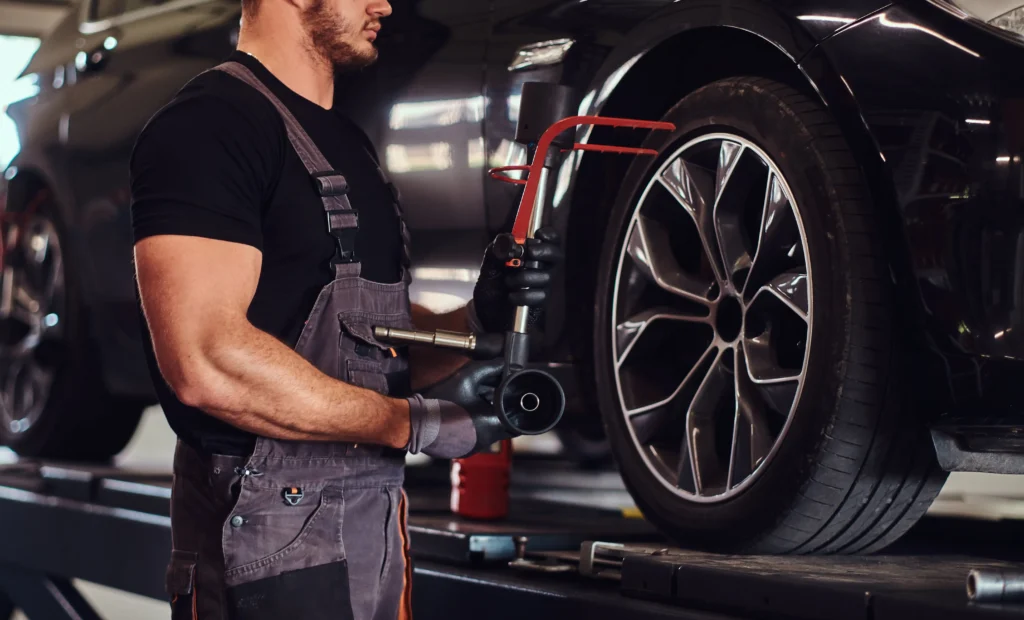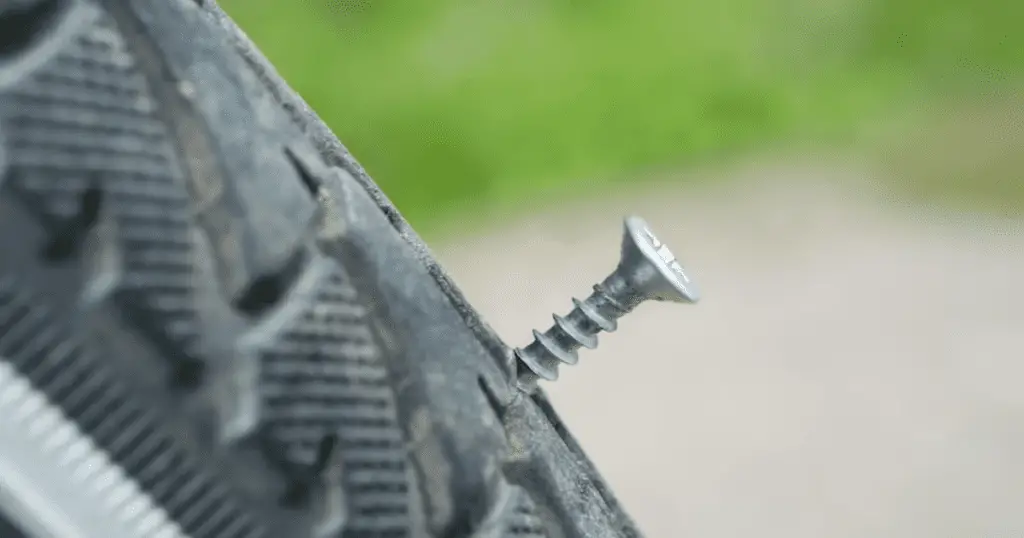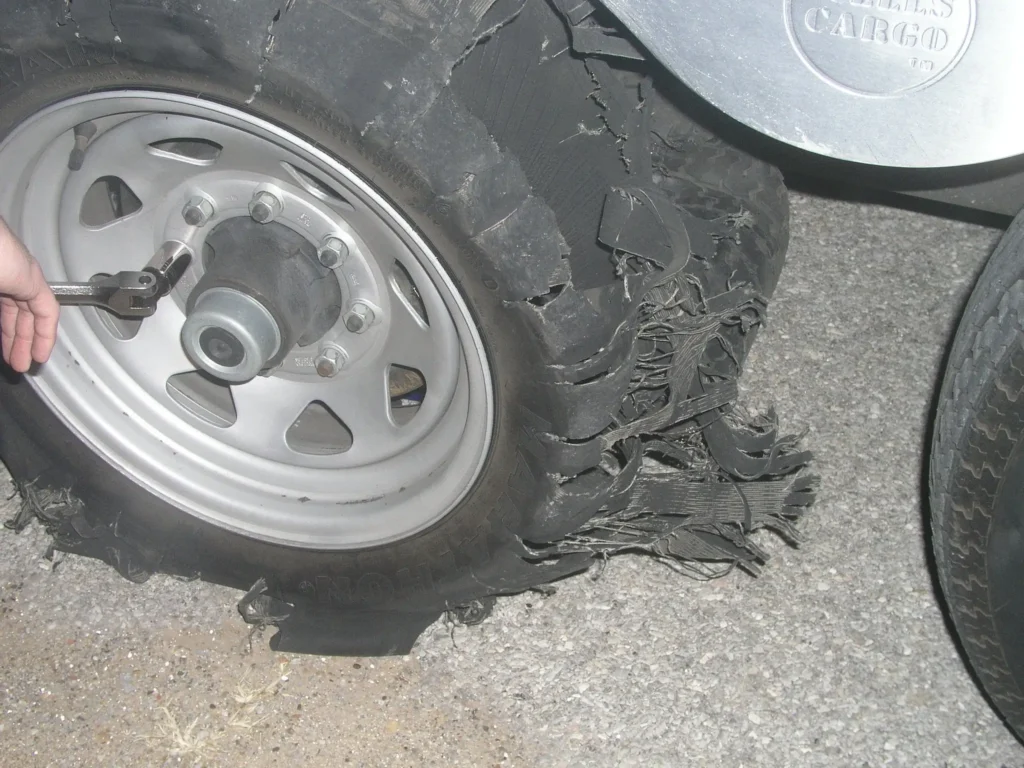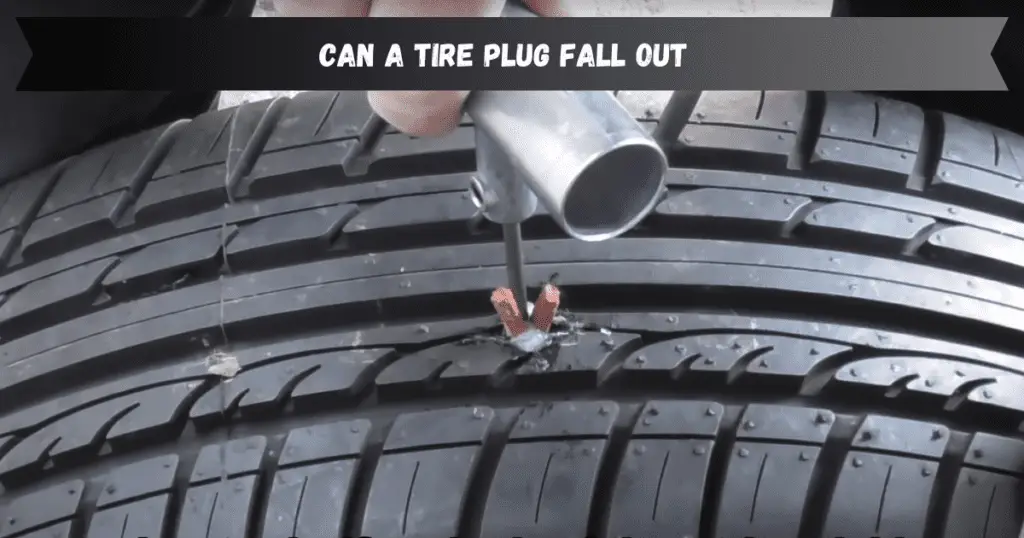As a car owner, one of the most important maintenance tasks you can undertake to ensure a smooth, safe, and cost-effective driving experience is regular tire rotation and balancing. These simple yet essential procedures can work wonders in extending the lifespan of your tires, improving fuel efficiency, and enhancing the overall handling and performance of your vehicle.
In this comprehensive guide, we’ll dive into the importance of tire rotation and balancing, How often should tires be rotated and balanced, provide expert recommendations on the optimal frequency, and equip you with the knowledge to become a tire care master.
Table of Contents
ToggleWhy Tire Rotation and Balancing Matter
Tire rotation and balancing are two distinct but complementary maintenance tasks that work hand-in-hand to keep your tires in tip-top shape. Let’s explore the benefits of each:
The Power of Tire Rotation
Tire rotation is moving the tires from one position on the vehicle to another, typically from front to back or diagonally. This simple yet crucial step helps to ensure even wear across all four tires, which can significantly extend their lifespan.
The reason for rotating tires is that the front and rear tires wear at different rates due to the vehicle’s weight distribution and driving dynamics. The front tires, which handle the majority of the braking and steering, tend to wear out faster than the rear tires. By regularly rotating the tires, you can equalize the wear pattern, ensuring that all four tires wear evenly and last longer before needing replacement.

In addition to extending tire life, tire rotation also offers these fantastic benefits:
- Improved handling and stability: Evenly worn tires provide better traction and grip, enhancing the vehicle’s overall handling and stability, especially during sudden maneuvers or inclement weather.
- Enhanced safety: Uneven tire wear can lead to problems like decreased responsiveness, increased stopping distances, and a higher risk of blowouts or hydroplaning. Rotating tires helps maintain consistent performance and safety.
- Better fuel economy: Evenly worn tires roll more efficiently, reducing rolling resistance and improving fuel efficiency.
The Magic of Tire Balancing
Tire balancing is the process of ensuring that the weight of the tire and wheel assembly is evenly distributed around the axle. This is essential because any imbalance can cause vibrations, uneven tread wear, and a host of other problems.
When a tire is not properly balanced, it can create two types of imbalances:
- Static Imbalance: This occurs when there is a heavier or lighter section within the tire, causing it to bounce up and down as it rotates.
- Dynamic Imbalance: This happens when the weight is not evenly distributed across the lateral centerline of the wheel, resulting in a side-to-side wobble.
Tire balancing helps to correct these imbalances by strategically placing small weights on the wheel to counteract the uneven distribution of weight. The benefits of proper tire balancing include:
- Smoother ride: Balanced tires reduce vibrations and provide a more comfortable driving experience.
- Increased tire life: Evenly distributed weight means less stress on the tire, leading to more even tread wear and a longer lifespan.
- Improved safety: Balanced tires are less likely to cause handling issues or pose a risk of blowouts.
- Better fuel efficiency: Reduced rolling resistance from balanced tires can lead to improved fuel economy.
Recommended Tire Rotation and Balancing Frequency
The optimal frequency for tire rotation and balancing can vary depending on your vehicle, driving conditions, and manufacturer recommendations. However, there are some general guidelines to follow:
Tire Rotation: The Goldilocks Zone
Most experts recommend rotating your tires every 5,000 to 8,000 miles, or approximately every six months. This interval can be adjusted based on your driving habits and the condition of your tires. For example, if you regularly engage in activities that cause accelerated tire wear, such as off-roading or high-performance driving, you may need to rotate your tires more frequently.
It’s important to note that the specific rotation pattern (front-to-back, side-to-side, or diagonal) can also vary depending on your vehicle’s drivetrain and tire design. Always consult your owner’s manual or a trusted mechanic to determine the best rotation pattern for your car.
Tire Balancing: The Sweet Spot
Tire balancing should be performed every 12,000 miles or during every other tire rotation, whichever comes first. This is a general guideline, and your vehicle’s manufacturer may have specific recommendations based on your make and model.
It’s also worth noting that new tires should always be balanced when installed, as they can become unbalanced during the mounting process. Additionally, if you notice any vibrations or uneven tread wear, it may be a sign that your tires need to be rebalanced.
Signs That Your Tires Need Attention
Staying vigilant for potential issues is key to maintaining the health and performance of your tires. Here are some telltale signs that it’s time to rotate or balance your tires:
- Uneven Tire Wear: If you notice that one or more of your tires are wearing down more quickly than the others, it’s a clear sign that a rotation is needed.
- Vibrations: If you feel a sustained vibration in the steering wheel or throughout the vehicle, it could be a sign of a tire balance issue.
- Pulling or Drifting: If your vehicle seems to be pulling to one side or the other while driving on a straight, level road, it may be time to have your tires balanced.
- Decreased Fuel Efficiency: Unbalanced or unevenly worn tires can increase rolling resistance, leading to a noticeable decrease in fuel economy.
- Decreased Traction: Tires with uneven tread wear may provide less traction, especially in wet or slippery conditions, compromising the vehicle’s handling and safety.
If you notice any of these signs, it’s best to have your tires inspected and serviced by a qualified mechanic as soon as possible. Ignoring these issues can lead to accelerated tire wear, decreased performance, and potentially even safety hazards.
The Benefits of Staying on Top of Tire Maintenance
Regularly rotating and balancing your tires may seem like a minor maintenance task, but the long-term benefits can be truly remarkable. By staying on top of these essential procedures, you can enjoy the following advantages:
- Longer Tire Lifespan: By ensuring even wear across all four tires, you can dramatically extend their usable life, potentially saving you hundreds of dollars in replacement costs over the life of your vehicle.
- Improved Fuel Efficiency: Properly balanced and rotated tires roll more efficiently, reducing rolling resistance and leading to improved fuel economy.
- Enhanced Safety: Well-maintained tires provide better traction, handling, and responsiveness, which can be crucial in emergencies or inclement weather.
- Smoother Ride Quality: Properly balanced tires significantly reduce vibrations and provide a more comfortable, enjoyable driving experience.
- Increased Resale Value: Vehicles with a well-documented maintenance history, including regular tire rotations and balancing, tend to hold their value better when it’s time to sell or trade in.
By prioritizing tire rotation and balancing as part of your regular vehicle maintenance routine, you can enjoy the peace of mind that comes with knowing your tires are performing at their best, all while saving money and keeping your car in top shape.
DIY or Hire a Pro? The Pros and Cons of Handling Tire Maintenance Yourself
When it comes to tire rotation and balancing, you have the option to either do it yourself or have a professional mechanic take care of it. Each approach has its advantages and considerations:
Doing It Yourself: The DIY Difference
Rotating and balancing your tires can be a cost-effective and empowering DIY project, but it does require some basic tools and a bit of mechanical know-how. Here are some of the key factors to consider:
Advantages:
- Cost Savings: Performing the work yourself can save you money compared to having a professional do it.
- Sense of Accomplishment: Completing this maintenance task can be a satisfying and confidence-boosting experience.
- Increased Knowledge: Going through the process can help you better understand the inner workings of your vehicle and become a more informed car owner.
Considerations:
- Necessary Tools: You’ll need a lug wrench, torque wrench, car jack, and jack stands, which can add to the initial investment.
- Skill Level: Rotating and balancing tires requires some mechanical aptitude and attention to detail to ensure they’re done properly.
- Time Commitment: The process can be time-consuming, especially if you’re new to it, and may require a dedicated afternoon or weekend.
- Safety Concerns: Improper use of jacks or stands can pose a serious safety risk, so it’s crucial to familiarize yourself with the necessary precautions.
Seeking Professional Help: The Worry-Free Approach
Entrusting your tire rotation and balancing to a qualified mechanic can be a convenient and secure option, especially for those who don’t feel comfortable tackling the job themselves.
Advantages:
- Expertise and Experience: Professional mechanics have the skills, tools, and knowledge to efficiently and accurately perform these tasks.
- Convenience: You can have the work done while you wait, without investing the time and effort yourself.
- Potential Warranty Coverage: Many tire shops and dealerships may offer warranty coverage on their work, providing an added layer of protection.
Considerations:
- Cost: A professional handling the job will generally be more expensive than doing it yourself.
- Scheduling: You’ll need to schedule an appointment and plan around the shop’s availability.
Ultimately, the choice between DIY and professional tire rotation and balancing will depend on your mechanical aptitude, available tools, time constraints, and personal preferences. Whichever route you choose, the key is to ensure the job is done properly to maximize the benefits and extend the life of your tires.
Frequently Asked Questions:
Is it OK to rotate tires every 10,000 miles?
While some manufacturers may allow for longer intervals between tire rotations, the general recommendation is to rotate your tires every 5,000 to 8,000 miles. Waiting until 10,000 miles may result in uneven wear and reduced tire life. It’s best to follow the guidelines in your owner’s manual or consult a professional for the optimal rotation schedule for your vehicle.
Is it OK to rotate tires without balancing them?
It is generally recommended to balance your tires in addition to rotating them. Tire balancing helps to ensure even weight distribution and minimize vibrations, which can extend the life of your tires and provide a smoother driving experience. Rotating tires without balancing them may lead to premature wear and other issues. For best results, follow the recommended intervals for both rotation and balancing.
How do I know if I need my tires balanced and rotated?
There are a few telltale signs that your tires may need to be balanced and rotated:
- Uneven tire wear: If you notice that one or more tires are wearing down faster than the others, it’s a sign that a rotation is needed.
- Vibrations: Persistent vibrations in the steering wheel or throughout the vehicle can indicate an imbalance.
- Pulling or drifting: If your car seems to be pulling to one side while driving on a straight, level road, it may be time for a tire balance.
- Decreased fuel efficiency: Unbalanced or unevenly worn tires can increase rolling resistance, leading to a noticeable drop in fuel economy.
If you experience any of these issues, it’s best to have your tires inspected and serviced by a qualified mechanic.
How long does tire balancing last?
The longevity of a tire balance can vary depending on several factors, such as driving conditions, the quality of the balancing job, and the overall condition of your tires. As a general guideline, properly balanced tires can maintain their balance for 5,000 to 8,000 miles or 6 to 12 months. However, it’s important to monitor your tires for any signs of imbalance, such as vibrations or uneven wear, and have them rebalanced as needed. Regular tire rotations can also help maintain the balance and extend the time between balancing services.
Conclusion
Tire rotation and balancing may seem like mundane maintenance tasks, but they are truly the unsung heroes of vehicle care. By prioritizing these simple yet essential procedures, you can unlock a world of benefits, including extended tire life, improved safety, enhanced fuel efficiency, and a smoother, more comfortable driving experience.
Whether you choose to handle the job yourself or entrust it to a professional, staying on top of tire rotation and balancing is a surefire way to maximize the performance and longevity of your vehicle’s most critical components. So, don’t wait until it’s too late – make tire rotation and balancing a regular part of your maintenance routine and enjoy the peace of mind that comes with knowing your tires are in top shape.





